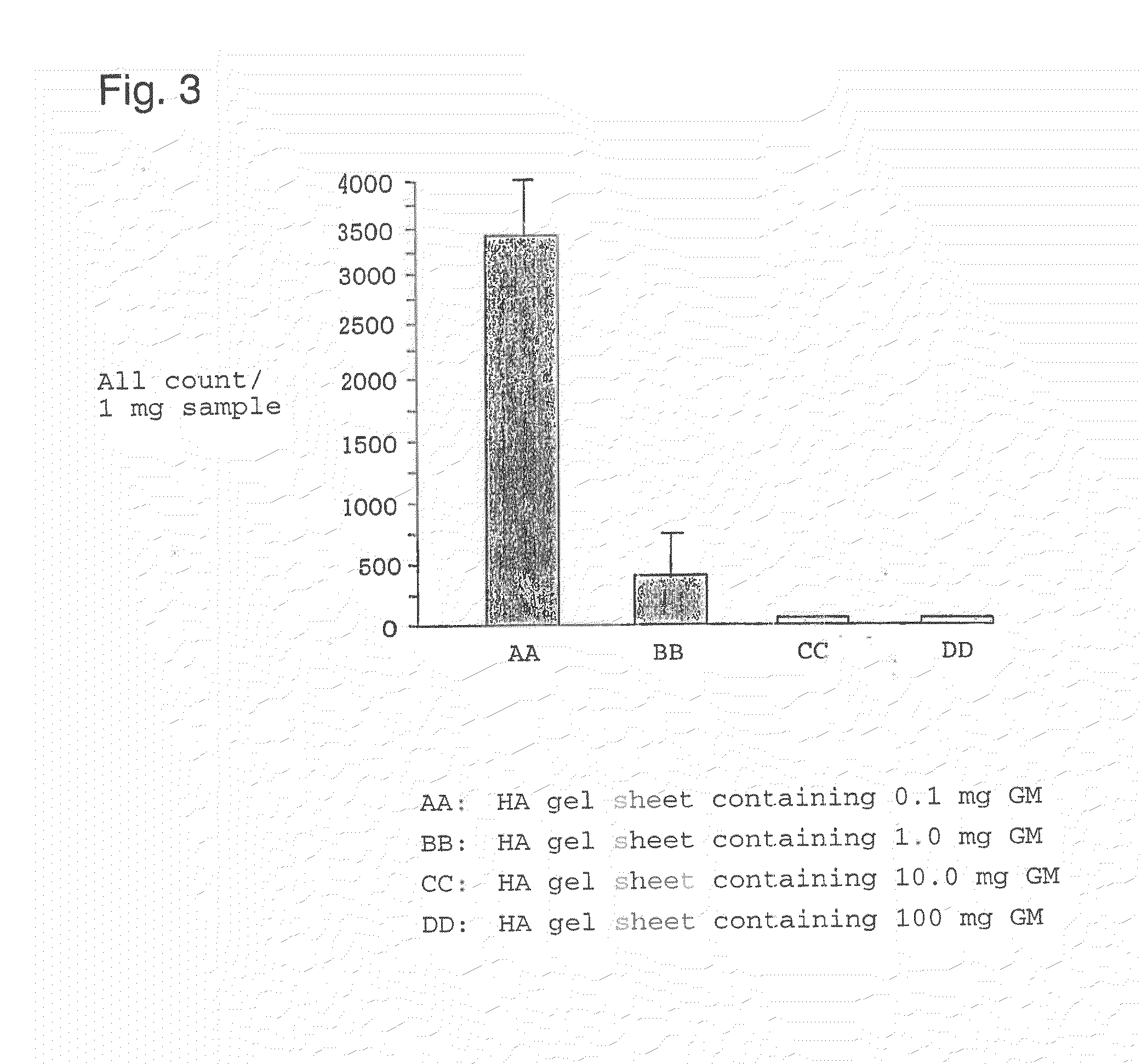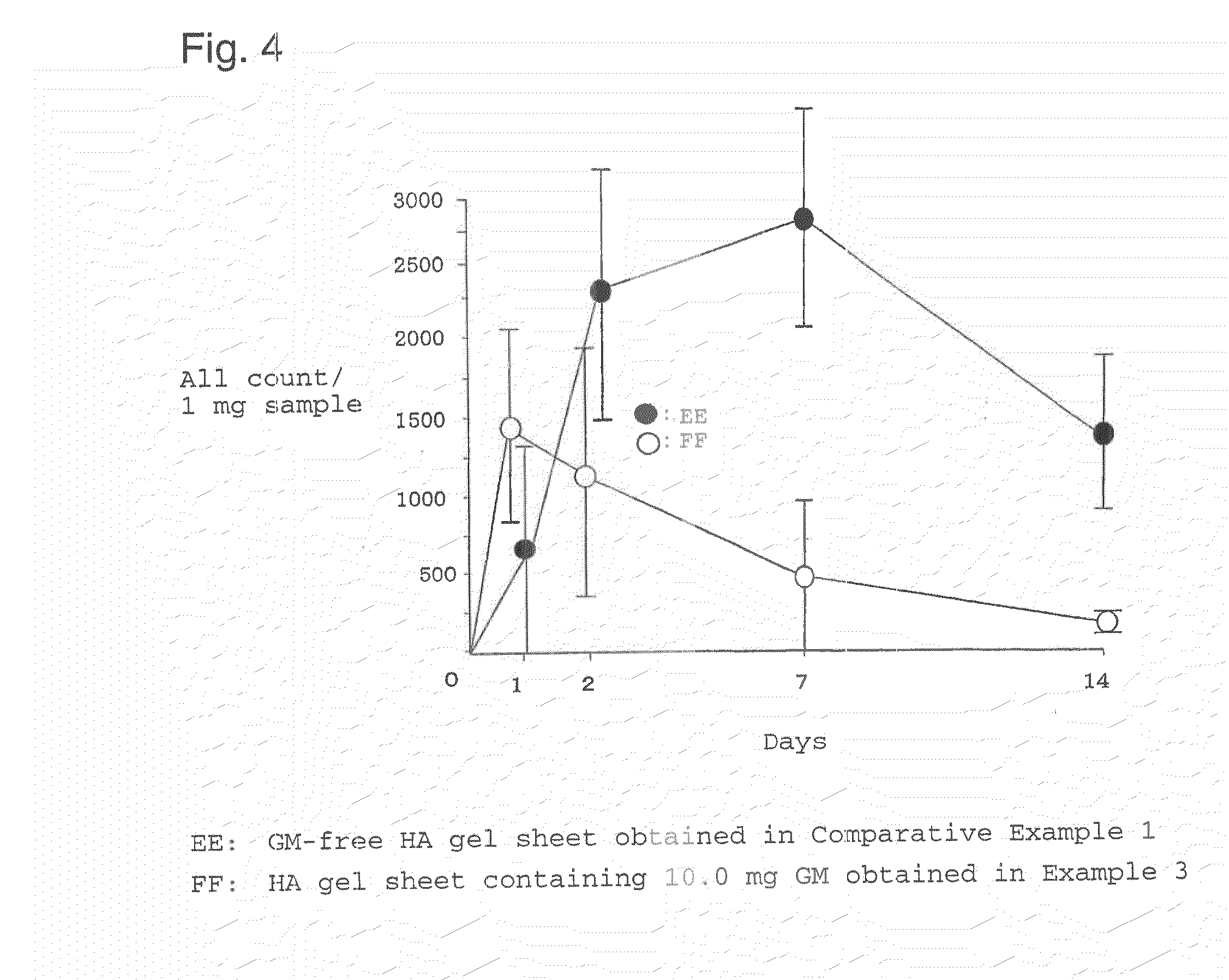Therapeutic composition for bone infectious disease
a technology for infectious diseases and therapeutic compositions, applied in the field of compositions for bone infection, can solve the problems of pseudarthrosis and fistulization, heavy time and financial burden on patients and medical institutions, and difficulty in completely preventing bone infection
- Summary
- Abstract
- Description
- Claims
- Application Information
AI Technical Summary
Benefits of technology
Problems solved by technology
Method used
Image
Examples
example 1
[0090]Hyaluronic acid having a molecular weight of 2×106 Da was dissolved in distilled water to give a 1 mass % hyaluronic acid aqueous solution having a pH of 6.0. The pH of the aqueous solution was adjusted to 1.5 with 1N hydrochloric acid. A 2 ml portion of the acidic hyaluronic acid aqueous solution was poured into a 2.5×4.0 cm Petri dish (10 cm2), placed in a refrigerator set at −20° C. for 6 days and thawed at 25° C. to give a sheet of hyaluronic acid gel (hereinafter referred to as “HA gel”). The HA gel was neutralized in 100 ml of phosphate buffered saline, pH 7 for 24 hours and then washed with distilled water sufficiently.
[0091]The HA gel was pressed between two plates, swelled with 2 ml of distilled water containing 0.1 mg gentamicin (hereinafter referred to as “GM”) and then freeze-dried to give a 2.5×4.0 cm HA gel sheet containing 0.1 mg GM.
example 2
[0092]The procedure in Example 1 was followed except that 2 ml of distilled water containing 1.0 mg GM was used for swelling before freeze-drying to give a 2.5×4.0 cm HA gel sheet containing 1.0 mg GM.
example 3
[0093]The procedure in Example 1 was followed except that 2 ml of distilled water containing 10.0 mg GM was used for swelling before freeze-drying to give a 2.5×4.0 cm HA gel sheet containing 10.0 mg GM.
PUM
| Property | Measurement | Unit |
|---|---|---|
| molecular weight | aaaaa | aaaaa |
| pH | aaaaa | aaaaa |
| diameter | aaaaa | aaaaa |
Abstract
Description
Claims
Application Information
 Login to View More
Login to View More - R&D
- Intellectual Property
- Life Sciences
- Materials
- Tech Scout
- Unparalleled Data Quality
- Higher Quality Content
- 60% Fewer Hallucinations
Browse by: Latest US Patents, China's latest patents, Technical Efficacy Thesaurus, Application Domain, Technology Topic, Popular Technical Reports.
© 2025 PatSnap. All rights reserved.Legal|Privacy policy|Modern Slavery Act Transparency Statement|Sitemap|About US| Contact US: help@patsnap.com



